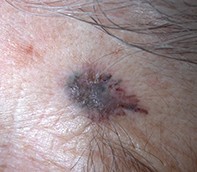Peer Reviewed
Feature Article Dermatology
Checking pigmented skin lesions
Abstract
Skin checks for malignancy are common requests for GPs, as are requests to remove benign skin lesions for cosmetic reasons or because they are itchy or catching on clothing. Here is a guide to the various types of pigmented skin lesions often seen in clinical practice.
Key Points
- Skin checks for malignancy are common requests for GPs and dermatologists, as are requests to remove benign skin lesions for cosmetic reasons or because they are itchy, catching on clothing or prone to being cut.
- A general examination provides a good opportunity to identify a person at risk for malignancy by observing whether he or she has sun damaged skin, a high mole count, dysplastic naevi or other indicators.
- A skin check is a time consuming process; preferably it should not be done on the fly.
- It is helpful if patients’ partners are available during a skin check so that they can point out any lesions they have noted, and you can show them lesions that should be monitored over time and what to look out for regarding common skin cancers.
- People with risk factors for skin cancers should see their doctor for regular skin checks. They should also check their own skin and be familiar with the features of skin cancers.
Purchase the PDF version of this article
Already a subscriber? Login here.

